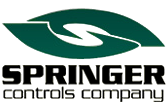Temperature monitoring is a critical aspect for many industries, from manufacturing and food processing to healthcare. Without reliable temperature sensors, it would be impossible to maintain the quality and safety of products or processes. In this post, we’ll look at the different types of temperature monitoring devices available today, from thermocouples to semiconductor-based ICs.
A Brief History of Temperature Monitoring Devices
The technology behind temperature monitoring devices has evolved quite a bit since thermometers were invented in the 1500s. By the early 1800s, thermocouples and other types of electrical temperature-measuring instruments had been developed, followed by resistance temperature detectors (RTDs) and thermistors. In the 1980s, semiconductor integrated circuits (ICs) became available for use in temperature sensors.
The 4 Common Types of Temperature Monitoring Devices
Today, there are four main types of temperature monitoring devices used: thermocouples, RTDs, thermistors, and semiconductor-based ICs. Let’s look at each type individually.
Thermocouples
Thermocouples are among the most popular types of temperature sensors, as they are relatively inexpensive and simple to use. They work by using two different metals (such as copper and iron) that are joined together at one end – when heated, a tiny voltage is generated which can be measured to calculate the temperature. Thermocouples are often used in industries such as food processing and chemical production, where they are a cost-effective way of measuring temperature.
RTDs
Resistance Temperature Detectors (RTDs) use the principle of electrical resistance to measure temperatures. They consist of a wire-sensing element that is wrapped around a ceramic core; when heated, the resistance of the element increases in a predictable manner that can be used to calculate temperature. RTDs are accurate and reliable, but they are more expensive than thermocouples. They’re often used in applications where accuracy is critical – for example, medical devices or precision manufacturing processes.
Thermistors
Thermistors are similar to RTDs in that they use the principle of electrical resistance to measure temperatures. However, thermistors are made from ceramic or semiconducting materials and have a much higher sensitivity to temperature than RTDs. They’re often used in applications such as alarm systems and medical equipment where fast response time is important.
Fiber Optics
Fiber optics are immune to electromagnetic interference, as they use light and phosphorus to measure temperature. An infrared light is emitted which causes the phosphorus to glow. The length of time the phosphorus glows is directly related to the temperature. Fiber optics are highly accurate and react quickly to changes, but are more expensive and more difficult to install correctly as the fiber optic cables are not easily cut and can be damaged if kinked.
A Trusted Partner in Temperature Monitoring Devices
Temperature monitoring devices are an important part of many manufacturing processes and industries, providing accurate readings that help keep products and processes safe. Whether you’re looking for a cost-effective solution like thermocouples or a more accurate option such as semiconductor-based ICs, Springer Controls has all the temperature sensing equipment you need.
